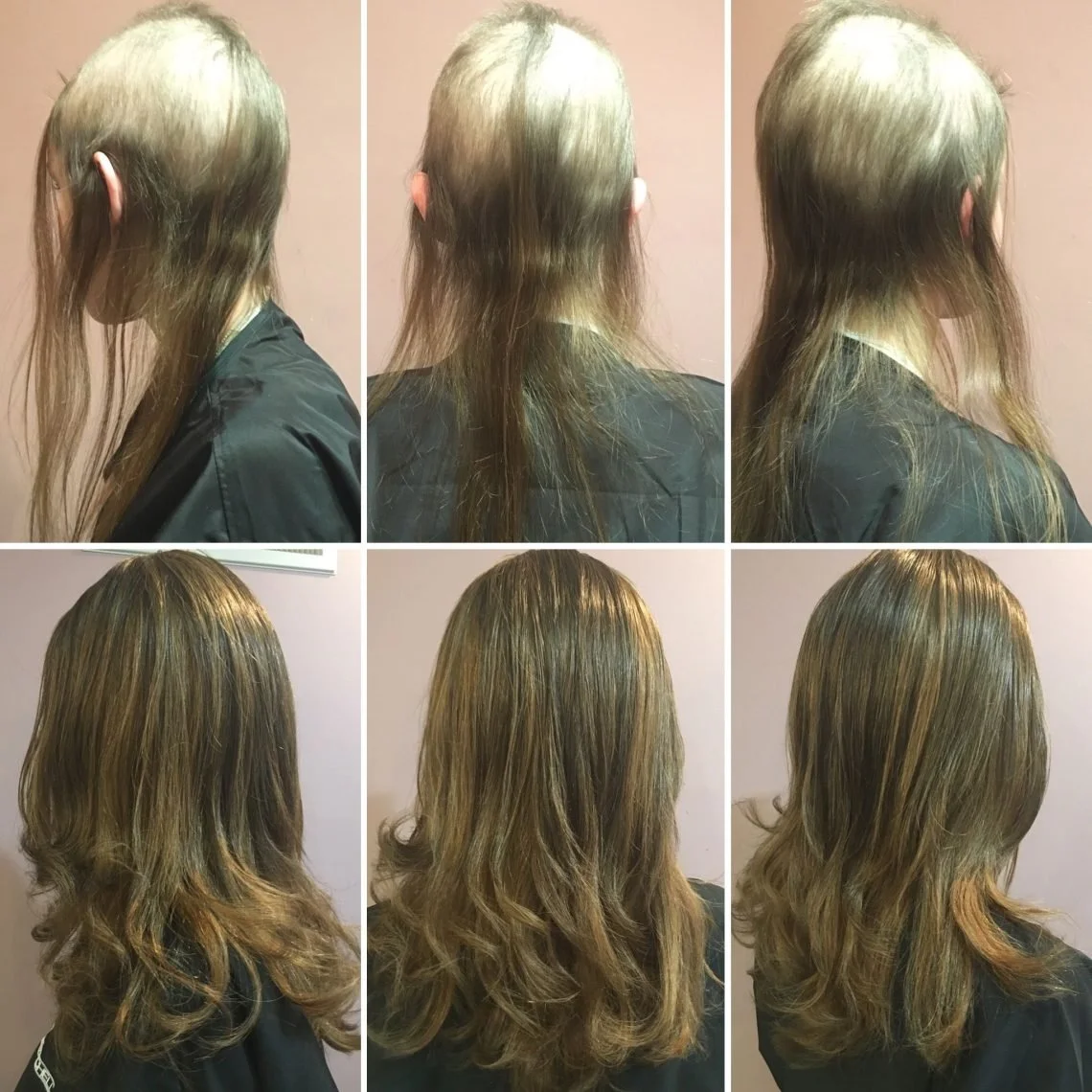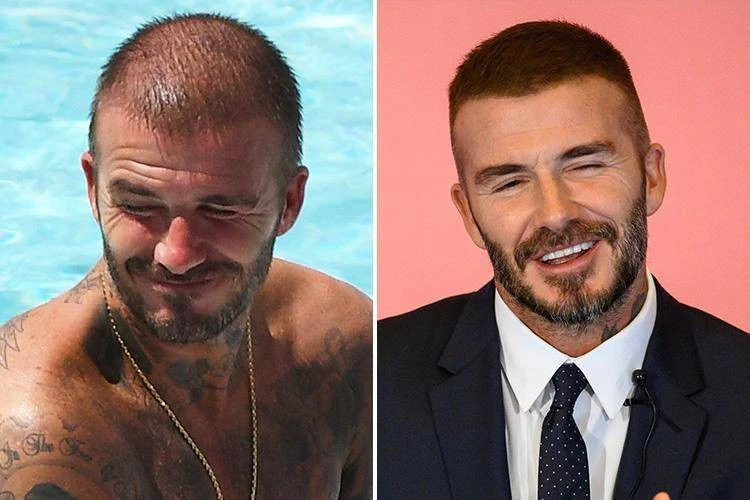The Male Pattern Baldness: 5 Main Causes and Prevention Methods
Male pattern baldness is a widespread issue affecting millions of men worldwide. Scientifically known as androgenetic alopecia, this condition is caused by a combination of genetic factors and hormonal changes. In this article, we will delve into the scientific causes of male pattern baldness and discuss methods for preventing or alleviating this problem. We will also explore hair transplantation, hair grafting, and PRP (Platelet-Rich Plasma) as potential solutions in detail.
1. What is Male Pattern Baldness?
Understanding Androgenetic Alopecia Male pattern baldness, or androgenetic alopecia, is the most common form of hair loss in men, typically manifesting as a receding hairline or thinning hair on the crown. This form of hair loss results from a genetic predisposition combined with hormonal changes. Over time, androgenetic alopecia causes hair follicles to shrink, resulting in thinner and shorter regrowing hair. As time progresses, the hair follicles may lose their function entirely, leading to permanent hair loss.
The Role of Hormones: DHT (Dihydrotestosterone) The primary cause of male pattern baldness is the hormone dihydrotestosterone (DHT), a derivative of testosterone. DHT binds to hair follicles, causing them to shrink and weaken. Over time, under the influence of DHT, the hair follicles lose their function, and new hair production ceases. This process tends to progress more rapidly and severely in genetically predisposed individuals.
2. The 5 Main Causes of Male Pattern Baldness
- Genetic Factors The most significant cause of androgenetic alopecia is genetics. If male pattern baldness runs in your family, there is a high likelihood that you will also be affected. Genetic factors determine your hair follicles’ susceptibility to DHT, influencing the severity and speed of hair loss.
- Hormonal Imbalances Since DHT is a byproduct of testosterone, hormonal imbalances can accelerate hair loss. Particularly during puberty or aging, when testosterone levels increase, hair follicles may be exposed to higher levels of DHT. Thyroid problems or other hormonal disorders can also trigger hair loss.
- Aging Male pattern baldness typically accelerates with age. As you age, hair follicles weaken, and the hair growth cycle slows down. Over time, regrown hair becomes thinner and shorter, while some follicles may cease functioning entirely. This natural process progresses more quickly in men with androgenetic alopecia.
- Stress Intense stress is another factor that can cause hair loss. Stress can disrupt the body’s hormonal balance and negatively impact the hair growth cycle. The condition known as telogen effluvium causes hair to fall out prematurely. While this form of hair loss is usually temporary, prolonged stress can lead to permanent hair loss.
- Nutrient Deficiency The health of your hair depends on an adequate intake of vitamins and minerals. Deficiencies in iron, zinc, B vitamins, and protein can lead to hair loss. An unbalanced diet weakens hair follicles and accelerates hair loss. A healthy, balanced diet plays a crucial role in slowing down hair loss.
3. Methods of Prevention: Male Pattern Baldness
- DHT Blocker Treatment: Several medications are available to prevent damage to hair follicles caused by DHT. One of the most well-known is Finasteride, which blocks the production of DHT in the body, slowing hair loss and potentially promoting hair regrowth in some patients. This treatment should be administered under medical supervision, and potential side effects should be considered.
How Does Finasteride Work? Finasteride inhibits the enzyme 5-alpha-reductase, which converts testosterone into DHT. This reduces the stress on hair follicles caused by DHT, halting hair loss. Long-term use of Finasteride can slow the progression of hair loss and, in some cases, promote hair regrowth.
- Promoting Hair Growth with Minoxidil: Minoxidil is a topical medication that stimulates hair growth. Applied directly to the scalp, it increases blood flow to the hair follicles, supporting hair regrowth. Minoxidil is particularly effective in the early stages of male pattern baldness.
- PRP (Platelet-Rich Plasma) Therapy: PRP therapy is an innovative method for preventing male pattern baldness and supporting hair growth. In this treatment, plasma derived from the patient’s own blood is injected into the scalp. The plasma revitalizes hair follicles and promotes hair growth.
Benefits of PRP Therapy PRP slows hair loss while simultaneously encouraging the growth of stronger, healthier hair. When combined with surgical methods like hair transplantation, PRP therapy can accelerate the healing process and result in denser hair. This treatment is successfully applied in professional centers such as the HAIR MED Hair Transplantation Center.
- Strengthening Hair Follicles Through Mesotherapy: Mesotherapy involves injecting vitamins, minerals, and amino acids into the scalp to stop hair loss and promote hair growth. This treatment nourishes hair follicles and helps hair grow stronger and healthier. Mesotherapy can also enhance the success of hair transplants and hair grafting procedures.
- Balanced Diet and Lifestyle Changes: One of the most effective methods for maintaining hair health is a balanced diet and a healthy lifestyle. Hair follicles require sufficient amounts of vitamins and minerals to function properly. To prevent or slow hair loss, the following nutrients should be given special attention:
- Iron: Plays a role in oxygen transport to the hair roots.
- Zinc: Helps in the production of enzymes that support hair growth.
- B Vitamins (especially B7 – Biotin): Contribute to the health of hair follicles.
- Protein: Essential for the production of keratin, the main component of hair.
In addition, avoiding stress, getting enough sleep, and regular exercise contribute to hair health.
4. Surgical Solutions – Male Pattern Baldness: Hair Transplantation
One of the most effective and long-lasting solutions for male pattern baldness is hair transplantation. Healthy hair follicles are harvested from the donor area and transplanted to balding or thinning areas. Hair transplantation can be performed using various techniques, including FUE (Follicular Unit Extraction), Sapphire FUE, and DHI (Direct Hair Implantation).
- FUE (Follicular Unit Extraction) Method FUE (Follicular Unit Extraction) is one of the most commonly used techniques in hair transplantation. Individual hair follicles are harvested from the donor area and transplanted to balding areas. The FUE method is minimally invasive, and the recovery time after the procedure is relatively short.
Advantages:
- Minimal scarring
- Short recovery time
- Natural results
Disadvantages:
- The procedure can be time-consuming
- Requires an experienced specialist
The FUE method is an effective way to permanently stop hair loss and achieve a natural-looking hairline.
- Sapphire FUE Method Sapphire FUE is an advanced version of the traditional FUE method. In this technique, hair follicles are extracted using special sapphire-tipped instruments. Sapphire tips allow for more precise and finer channels, resulting in a denser and more natural hair transplant.
Advantages:
- More precise and controlled procedures
- Natural-looking results
- Less trauma and faster recovery time
Disadvantages:
- Higher costs
- Also requires experienced professionals
Sapphire FUE is ideal for patients who desire a dense and natural appearance.
- DHI (Direct Hair Implantation) Method DHI (Direct Hair Implantation) involves extracting hair follicles similarly to FUE and immediately implanting them into balding areas using a special implantation pen. This technique allows for more precise placement of hair follicles, leading to denser results.
Advantages:
- Denser and more natural results
- Quick recovery time
- More control over hairline and density
Disadvantages:
- Can take longer
- Higher costs
DHI is particularly favored when reconstructing the frontal hairline with precision. Professional centers such as HAIR MED Hair Transplantation Center successfully employ this method.
5. HAIR MED Hair Transplantation Center: Reliable and Permanent Solutions
The HAIR MED Hair Transplantation Center specializes in hair transplantation and hair grafting. The center offers modern techniques and innovative treatment methods and creates individualized treatment plans to achieve natural and long-lasting results in male pattern baldness. The techniques used at the center, such as FUE Hair Transplant and DHI hair transplantation, as well as Sapphire hair transplantation, are distinguished by their high success rate.
Conclusion: Male Pattern Baldness
Male pattern baldness is a common issue caused by genetic and hormonal factors. However, thanks to modern medicine and technology, many effective and long-lasting solutions exist to combat this problem. DHT blockers, Minoxidil, PRP therapy, and Mesotherapy are methods that can slow hair loss and promote hair growth. Surgical solutions include FUE- and DHI, which have proven effective in hair transplants and hair grafting procedures. Professional centers like the HAIR MED Hair Transplantation Center offer these treatments at the highest level, providing reliable and permanent solutions for men suffering from hair loss.








